Siphon CFD Simulation, Ansys Fluent Training
$80.00 Student Discount
- The problem numerically simulates the Siphon Phenomenon using ANSYS Fluent software.
- We design the 2-D model by the SpaceClaim software.
- We Mesh the model by ANSYS Meshing software, and the element number equals 95451.
- We perform this simulation as unsteady (Transient).
- We use the VOF Multi-Phase Model to define two-phase flow in the siphon.
To Order Your Project or benefit from a CFD consultation, contact our experts via email ([email protected]), online support tab, or WhatsApp at +44 7443 197273.
There are some Free Products to check our service quality.
If you want the training video in another language instead of English, ask it via [email protected] after you buy the product.
Description
Description
The present problem simulates the siphon phenomenon using ANSYS Fluent software. We perform this CFD project and investigate it by CFD analysis.
Water always flows from an area under higher pressure to an area of lower pressure. The siphon effect occurs when the fluid flows to the highest portion of the bend pipe due to the pressure difference and then comes down from there due to gravity.
The present model is designed in two dimensions using the SpaceClaim software. The meshing of the model was done using ANSYS Meshing software. The element number is 95451.
Also, due to the nature of the problem, the transient solver is enabled.
Siphon Methodology
This project uses the VOF multiphase model to simulate and solve the two-phase flow field equations. The flash tank discharges and the siphoning effect causes the water to drain.
The K-epsilon Realizable viscous model with scalable wall function has been used to solve the turbulent flow equations. The pressure-velocity coupling scheme is SIMPLE.
The second-order upwind discretization method has been used for Momentum, and the first-order upwind discretization method has been used for Turbulent kinetic energy and Turbulent dissipation rate.
Initially, the patching option was used to add the water phase into the domain.
Siphon Conclusion
After the solution process is completed, contours of velocity, pressure, water volume fraction, and streamline are extracted and presented below. As observed, the water inside the flash tank discharges and causes the siphoning effect.
Due to the siphoning effect, water will pass through the pipe and go to the highest point, and then due to gravity, it will come downward. Once the water flow has begun, the water will continue to flow, draining the ponding area.

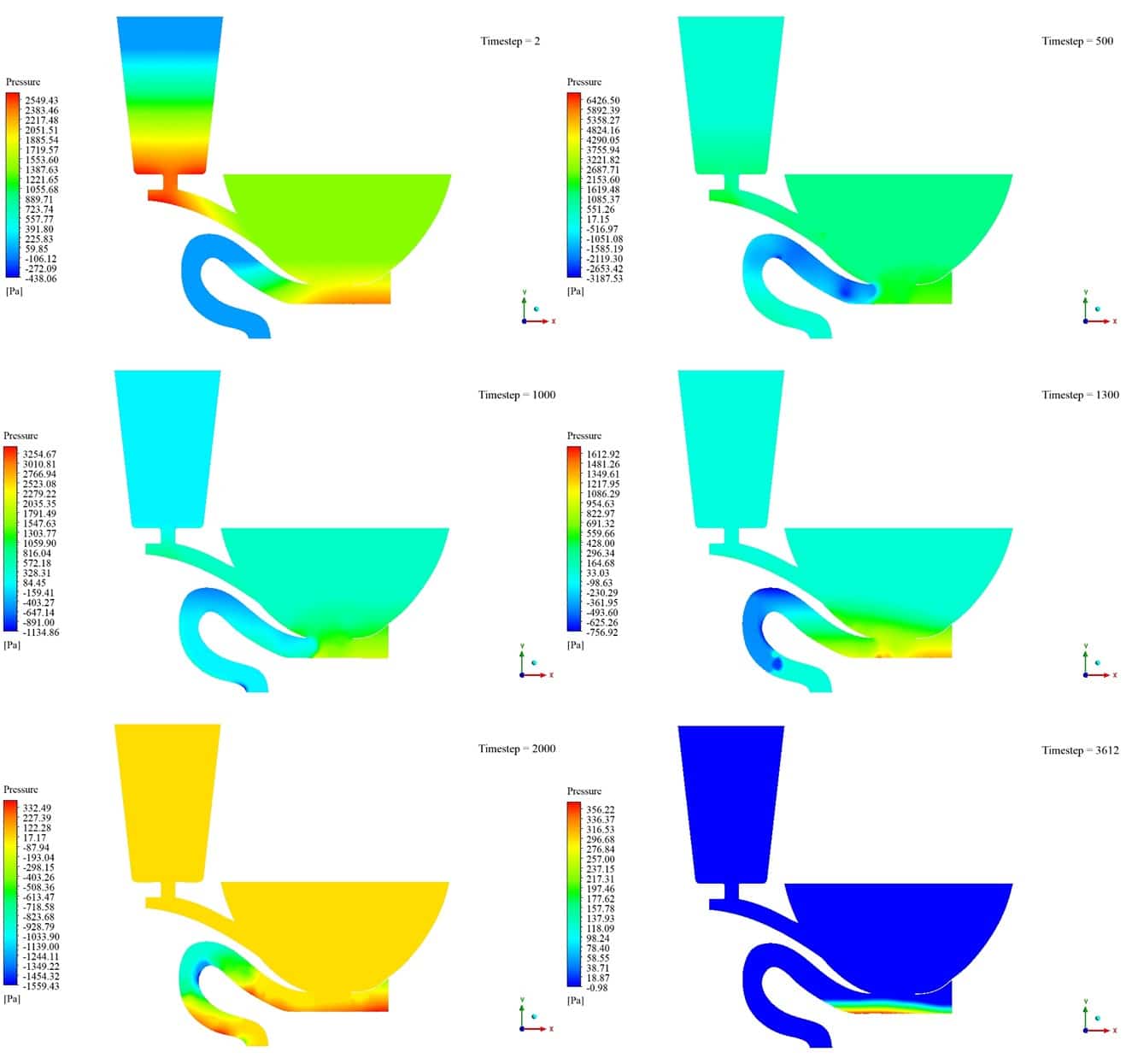
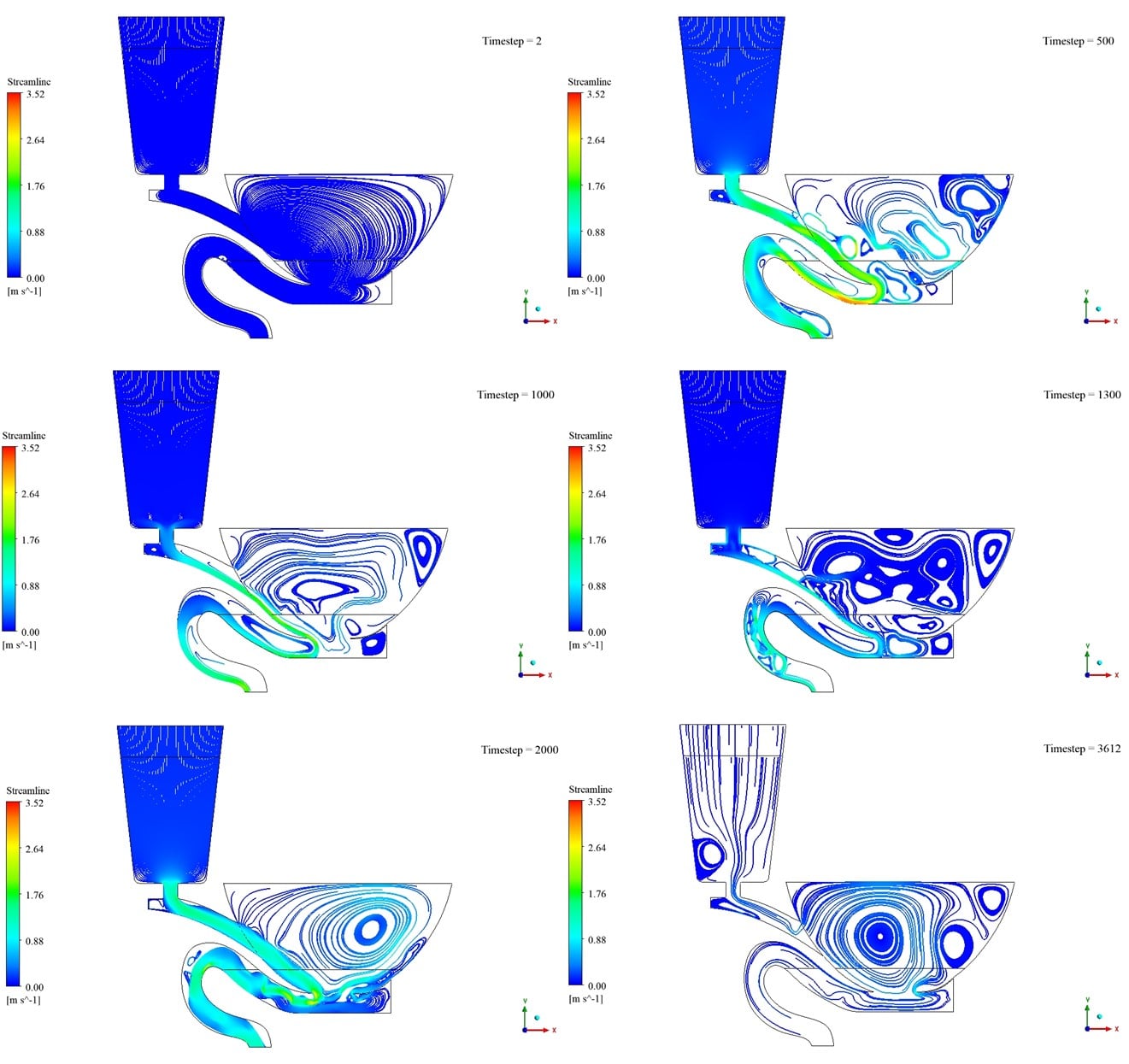
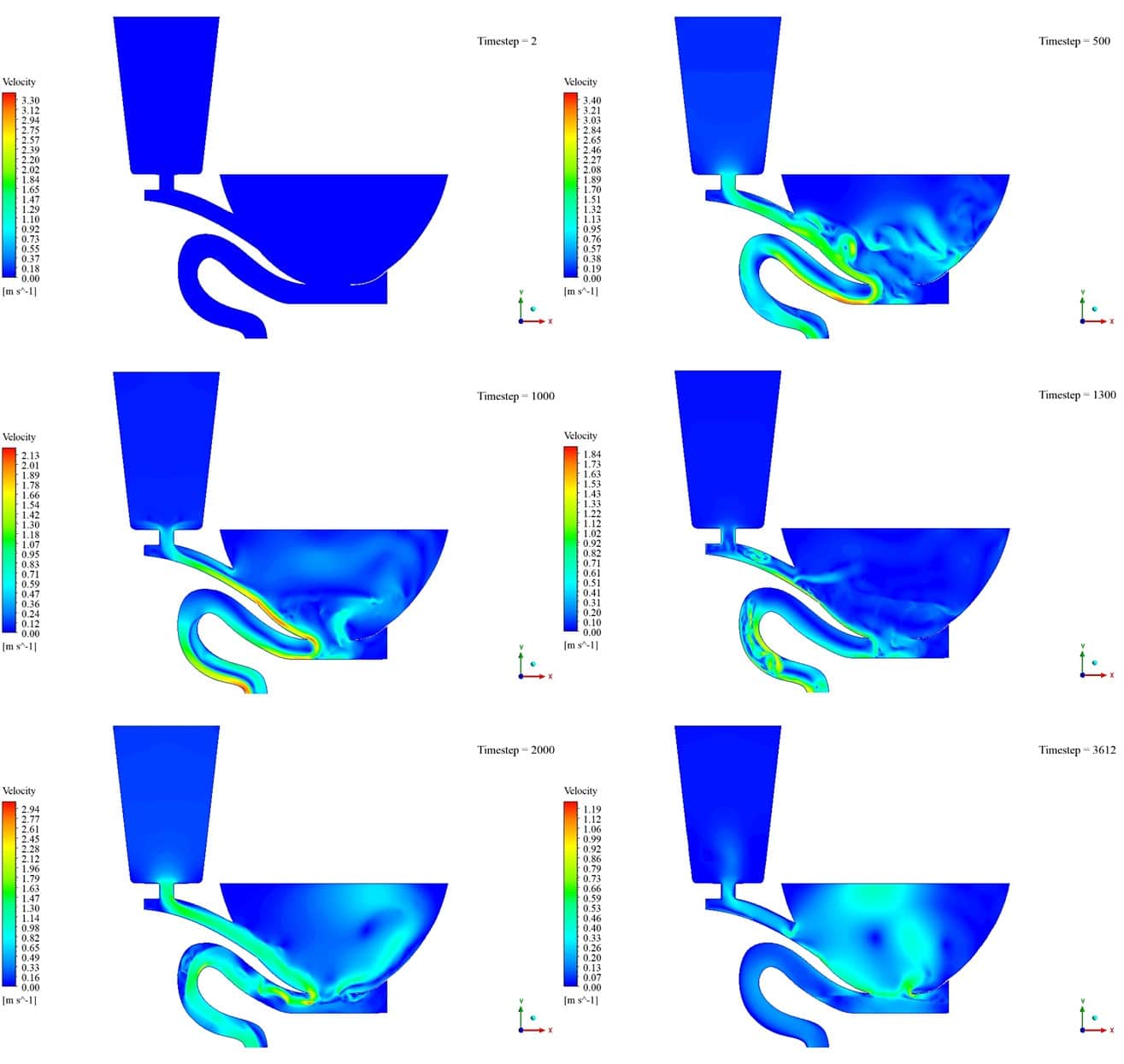
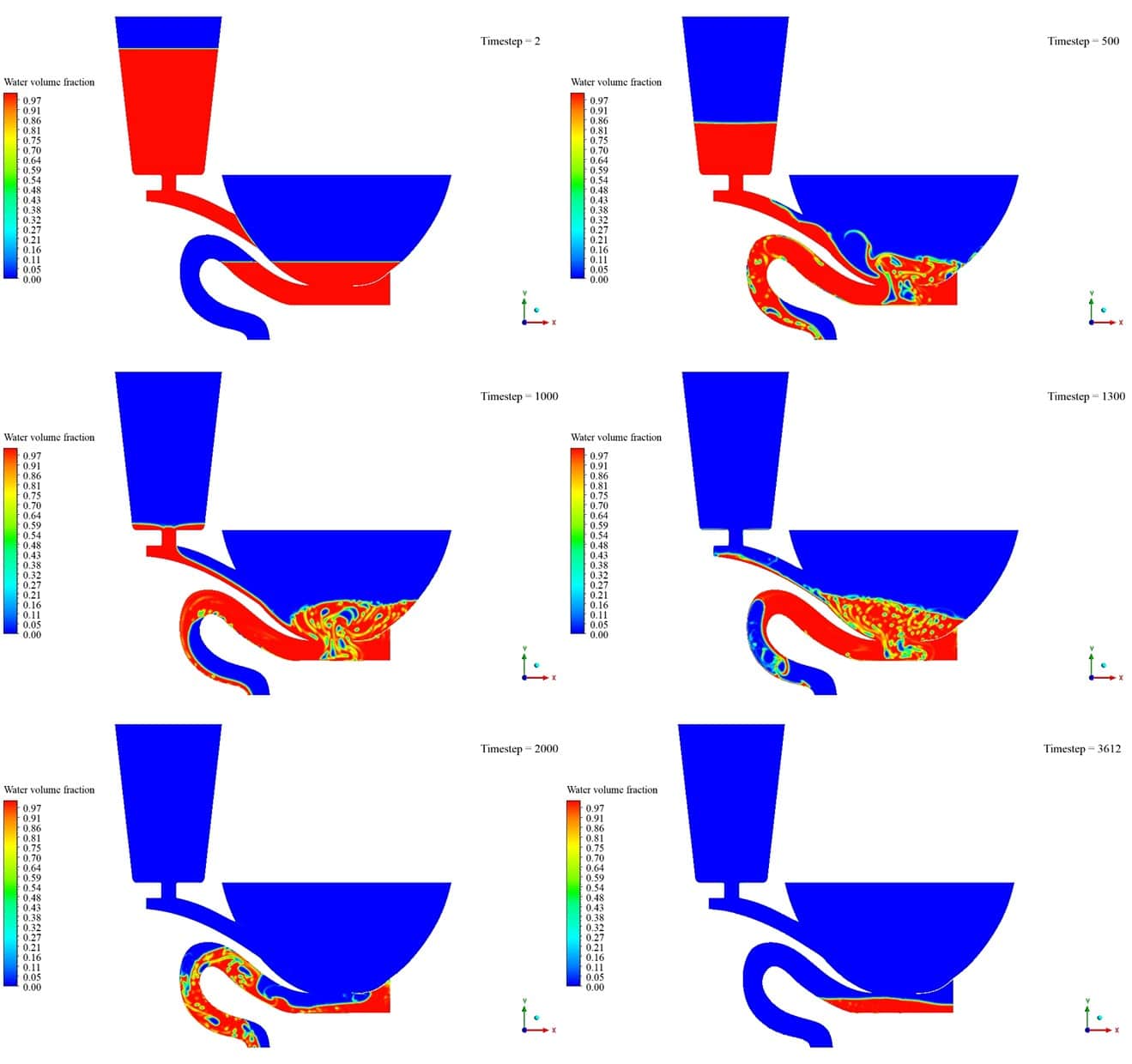
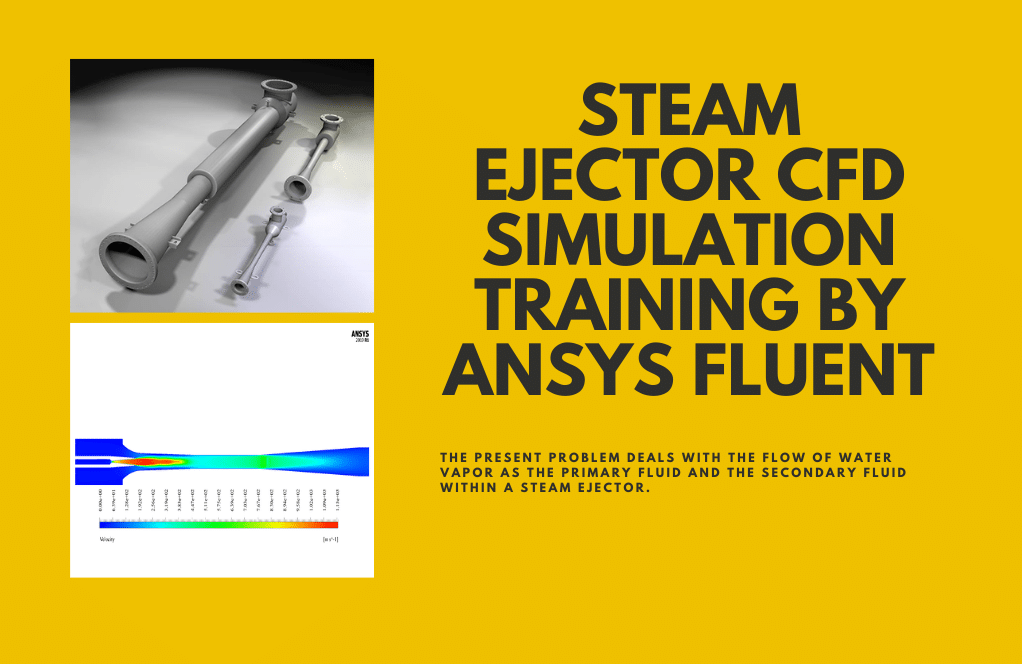

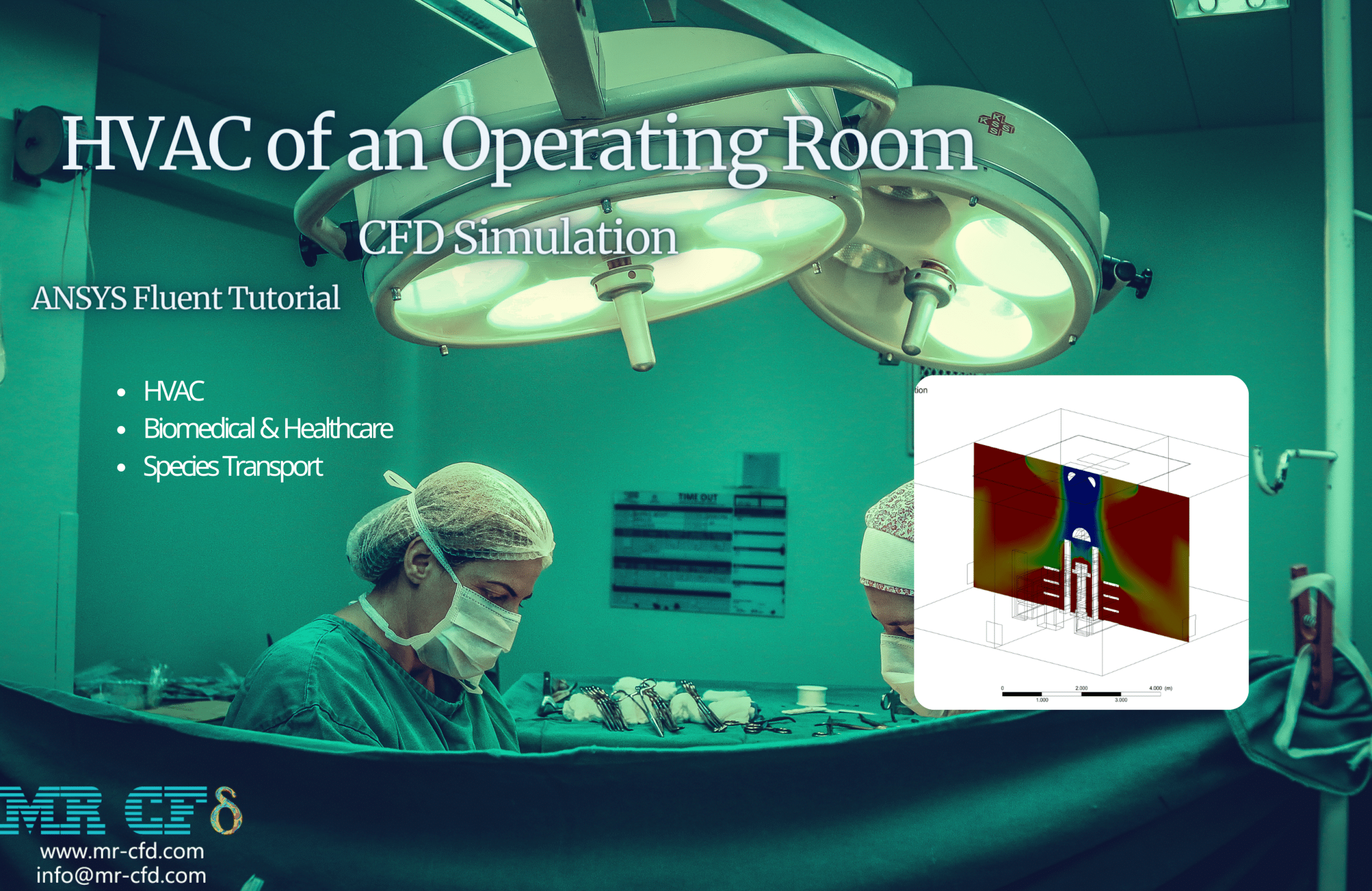
Judy O’Hara –
The training was enlightening! I better understand the siphon effect now and the simulation dynamics after completing this course. The step-by-step tutorial was super helpful for following along.
MR CFD Support –
Thank you for your positive feedback! We’re glad to hear that our Siphon CFD Simulation training helped clarify the dynamics of the siphon effect for you, and that you found the tutorial easy to follow. We appreciate you taking the time to share your experience, and we’re here to assist with any further learning endeavors in ANSYS Fluent.
Reese Fadel MD –
I’m amazed by the detail in the simulation reports! Could you let me know whether changes in ambient temperature were considered in the model as well?
MR CFD Support –
In the siphon CFD simulation project using ANSYS Fluent software, ambient temperature changes generally wouldn’t be taken into account if the main focus is on fluid mechanics and the siphon effect. Typically, the results presented in the report are focused on velocity, pressure, water volume fraction, and streamline, which are the primary factors demonstrating the siphoning phenomenon.
Estell Kling –
The training material was really comprehensive and helped me understand the siphon effect in detail. The simulated streamline results were particularly insightful.
MR CFD Support –
Thank you for your positive feedback! We’re glad to hear that our siphon simulation training materials were helpful in enhancing your understanding of the phenomenon. It’s great that the streamline results added value to your learning experience. If you ever have any more questions or need further assistance, feel free to reach out!
Prof. Devan Hackett V –
I’m intrigued by the siphon effect simulation. How does the VOF multiphase model ensure accurate representation of the water and air phases throughout the simulation? Can you explain that in simpler terms?
MR CFD Support –
In this simulation, the VOF (Volume of Fluid) multiphase model is used to keep track of and locate the free surface boundary between the water and air phases accurately. The model allows us to follow and predict the shape of the liquid-free surface – in this case, the water – as it rises to the highest point of the siphon and drains due to gravity. Simple terms, it’s like combining both liquid and air in the same container but being able to tell precisely where each starts and the other ends at any point in time.
Laurits M. –
It has a simple principle, but we use it every day. That is the interesting point!
Dieter –
Hello MR-CFD. Why did you use the Explicit formulation for the VOF model?
Lera Johns –
The explanation of the siphon phenomenon is great! I gained new insight into fluid dynamics through this simulation. Well done!
MR CFD Support –
Thank you for your compliment! It’s fantastic to hear that our simulation on the siphon phenomenon enhanced your understanding of fluid dynamics. We strive to offer clear insights and quality educational materials. If there’s anything more you wish to learn and explore, feel free to check our other projects!
Nora Sawayn –
I’ve always been amazed by the siphon phenomenon. Could you tell me if any specific boundary conditions were used to emulate the gravity effect in the simulation accurately, or if it’s automatically accounted for in ANSYS Fluent?
MR CFD Support –
Gravity is inherently considered in ANSYS Fluent simulations; it plays a critical role in siphon phenomena where fluid dynamics are influenced significantly by gravity. In the setup of this simulation, the gravity vector would be defined to ensure an accurate representation of the siphonic action. The traditional definition of gravity within Fluent effectively simulates the flow of water from a higher to a lower elevation, enabling the proper functioning of the siphon.
Devante Kassulke –
What steps did you follow to ensure the siphon effect was accurately captured in the simulation?
MR CFD Support –
In order to accurately capture the siphon effect in the simulation, we first designed a two-dimensional representation of the siphon setup using the SpaceClaim software. The meshing was meticulously created with ANSYS Meshing software to capture the nuances of the flow, especially around the bend of the siphon. Using the VOF multiphase model, we captured the interface between water and air. The use of the K-epsilon Realizable model helped to accurately model the turbulence effects. Patching was essential to define the initial water phase in the domain. Boundary conditions were applied rigorously, accounting for pressure differences that drive the siphon effect. The application of SIMPLE scheme allowed for steady pressure-velocity coupling, and various discretization methods calibrated to capture velocity and turbulence effectively.
Mrs. Isabell Murray –
The explanation of the siphon effect is very clear in this training. I appreciate how the physics are laid out and made understandable, especially how gravity and pressure differences contribute to the siphon process.
MR CFD Support –
Thank you for your positive feedback! We’re thrilled to know that the training material made the concepts of the siphon effect clear and comprehensible. It’s great that you understand the crucial roles gravity and pressure differences play in the siphoning process.
Margarete Pfeffer –
I love how the siphon phenomenon is demonstrated in this simulation! It’s fascinating to see fluid dynamics in action. Great job on showing the complex physics with easy-to-understand visualizations.
MR CFD Support –
Thank you for the kind words! We’re glad you appreciate the demonstration of the siphon effect and found our visualization helpful in understanding the fluid dynamics. It’s rewarding to know our efforts in making complex physics accessible are well-received by our users.
Abbie Walter –
I’m really impressed by the siphon simulation! It’s incredible how effectively the pressure difference and gravity were modeled to show the siphon effect. Great work!
MR CFD Support –
Thank you so much for your nice words! We’re thrilled to hear you found the siphon simulation impressive and that the modelling of the pressure difference and gravity up to your satisfaction. If you have any more questions or need further assistance, please don’t hesitate to reach out!
Daron Weimann –
The simulation explanation was superb! It really helped me understand the siphon effect better.
MR CFD Support –
Thank you for your kind words! We are thrilled to hear that our simulation on the siphon effect using ANSYS Fluent has enhanced your understanding of the phenomenon. If you need further assistance or have more inquiries regarding our products, feel free to reach out!
Amber Crona –
The training material was expertly crafted, providing an in-depth understanding of the siphon phenomenon. The mix of theory and practical application made complex concepts accessible. Perfect for students looking to bridge the gap between textbooks and real-world engineering challenges.
MR CFD Support –
Thank you for sharing your positive experience with our Siphon CFD Simulation training using Ansys Fluent. We’re thrilled to hear that our materials helped demystify complex concepts and offered a seamless connection between theory and application for you.
Ms. Eugenia Schimmel –
This was my first time learning about siphons and the CFD simulation truly helped visualize and understand the phenomenon. The detailed explanations of the setup and the actual flow visualization were excellent. The contours of velocity and pressure made it very clear what was happening at each stage.
MR CFD Support –
Thank you for your kind words! We’re thrilled to hear that our siphon CFD simulation provided the clarity and detail you needed to understand the process. It’s our goal to create educational materials that not only convey complex principles intuitively but also empower learners like you. Do let us know if there’s anything else we can help you with in your educational journey!
Sylvester Nitzsche –
Everything is clearly written and after going through provided materials everything becomes even clearer to me.
MR CFD Support –
Thank you for taking the time to write such positive feedback! We’re thrilled to hear our materials on the siphon CFD simulation in ANSYS Fluent have been helpful and clear. We aim to provide quality training that demystifies complex concepts, so it’s gratifying to know it’s appreciated by our customers. If you ever have more questions or need further assistance, don’t hesitate to reach out!
Scottie Mann DVM –
How does the software ensure continuity in the water flow once the siphoning effect takes place? Will it maintain the flow without interruption?
MR CFD Support –
In the simulation, the continuity of the water flow once the siphoning effect initiates is maintained through the proper handling of boundary conditions and the use of the VOF multiphase model, coupled with necessary turbulence and pressure solvers. As the siphon effect relies on gravity and pressure differential, as long as the simulated conditions don’t change, ANSYS Fluent will consistently solve the flow equations in each time step, allowing the water to continue flowing without interruption.
Cathy Shanahan –
Really impressed with the accuracy of simulating the siphon phenomenon! The way water travels from high pressure to low pressure areas was visualized perfectly in the simulation contours.
MR CFD Support –
Thank you for your positive feedback! We’re thrilled to hear that our simulation effectively demonstrated the siphon effect and that you appreciated the visualization of the water flow. If you have any further questions or need assistance, we’re here to help!
Marianna Johnston –
The write-up is very informative! It’s incredible how the training captures the complexity of the siphon phenomenon in ANSYS Fluent.
MR CFD Support –
Thank you for your positive feedback! We are glad to hear that our training materials met your expectations and provided a comprehensive understanding of the siphon phenomenon using CFD simulations in ANSYS Fluent.
Mrs. Karine Grady –
What is the reason for using the SIMPLE pressure-velocity coupling scheme in this simulation?
MR CFD Support –
The SIMPLE (Semi-Implicit Method for Pressure Linked Equations) pressure-velocity coupling scheme was chosen in this simulation due to its robustness and efficiency when solving the incompressible flow equations present in siphon dynamics. It provides a reliable method of intertwining the calculations of pressure and velocity fields, which is crucial for simulating the siphon effect accurately.